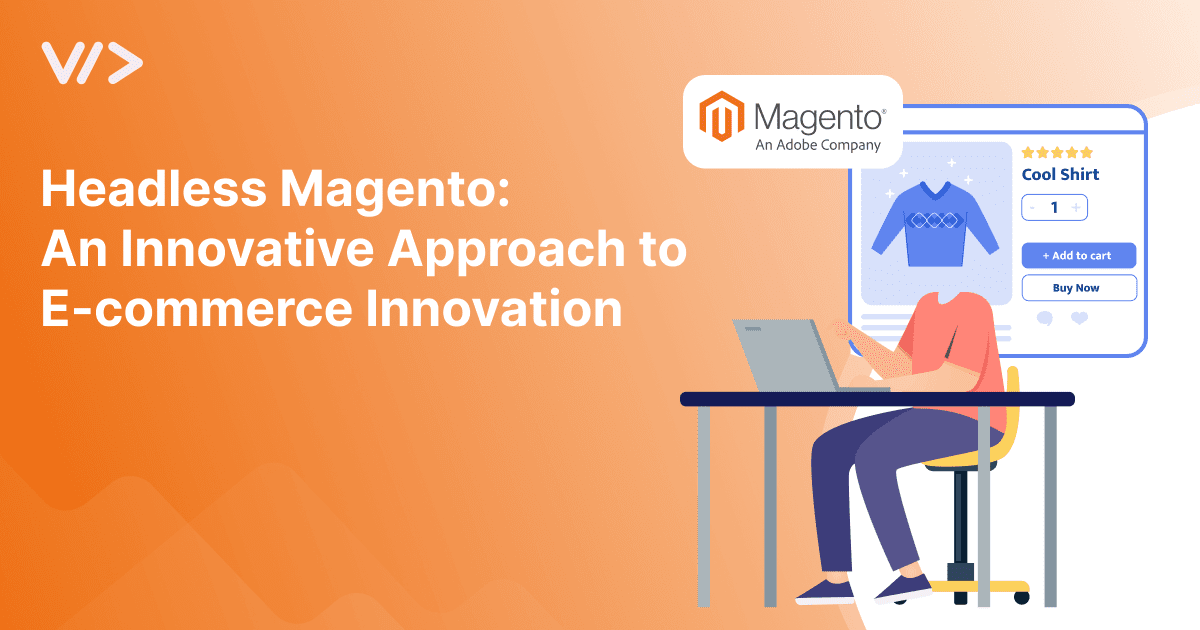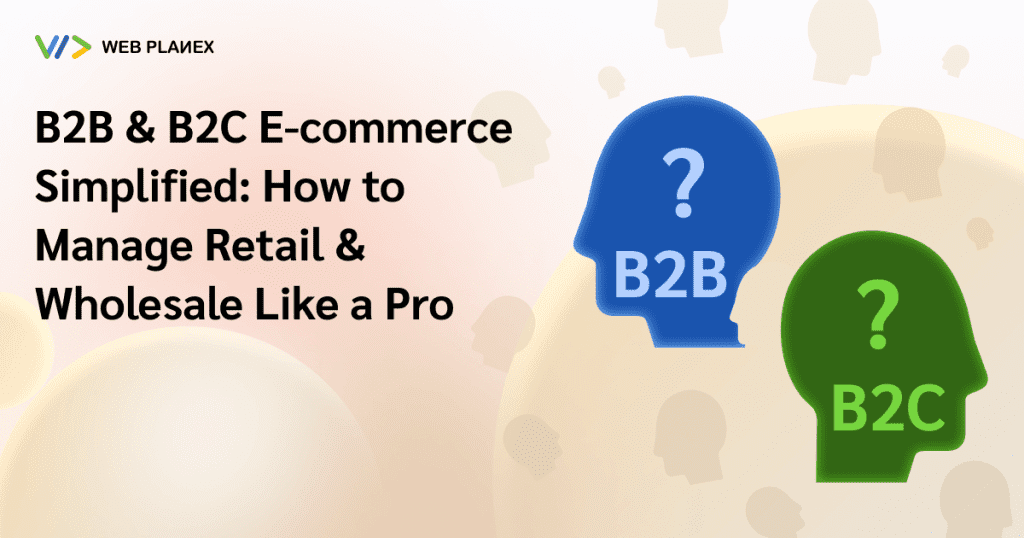
Magento (now known as Adobe Commerce) has been the popular e-commerce platform for several online retailers to create feature-rich online stores. However, they feel a bit restrictive in the Monolithic architecture where the backend and frontend are tightly coupled.
As the customer’s expectations and e-commerce technology are evolving at a rapid speed, you need a platform, which allows a great amount of flexibility and freedom to create an online store that provides an optimized customer experience across multiple touchpoints. This is where the Headless Magento architecture comes into the picture.
In this blog, we will discuss every single aspect of Headless Magento.
Headless Magento: An Overview
Headless Magento aims at decoupling the head and body. It’s a new architectural approach adopted to separate the backend (Magento) from the frontend (presentation layer). The backend is used to manage tasks such as product data, processing orders, payment processing, and other core functionalities. On the other side, since the frontend is separated, developers can rely on trending technology such as React, Vue.js, Next.js, and so on.
This separation is supported by APIs like Rest and GraphQL, which create a bridge for communication between the two layers. The decoupling makes it easier for you to create personalized online stores for various channels and ensure hassle-free integration of all these channels with the same backend.
Monolithic vs. Magento Headless – A Showdown between Two Architectures
Here, we have mentioned the key differences between monolithic and headless Magento that will help you determine the most suitable option for your e-commerce setup.
Monolithic Magento:
- In the monolithic, the backend (where data resides and processed) and the frontend (what users see and interact with) are tightly intertwined. In short, both layers remain in a single codebase and run on the same server.
- When it comes to customization options, you might feel disappointed as the frontend is tightly connected to built-in magento templates and functionalities, restricting your ability to utilize the latest frontend technologies.
- Any changes in your system require updates to the entire codebase, resulting in a longer development process and potential downtime.
Headless Magento:
- In magento headless architecture, both the frontend and backend are separated and communication is made through APIs (Application Programming Interfaces) such as Rest and GraphQL.
- In magento headless setup, the frontend is decoupled from the backend, allowing you to gain total control over the frontend and use the latest frontend technologies to build a customized storefront for better customer experiences.
- Since the both frontend and backend can be developed and employed separately, ensuring faster iterations and a quicker time to market. It’s like updating a single room without disrupting the other rooms in the house.
Unveiling the Benefits of Headless Magento
This decoupling paves the way for numerous benefits for Magento users and merchants:
Enhanced Frontend Flexibility
Get rid of the customization restrictions of Magento’s built-in templates and go headless to build your customized store. The headless magento allows you to freely use the newer fronted technologies to provide a delightful shopping experience to your loyal customers.
Amazing Omnichannel Experiences
Monolithic is not able to support multiple frontends. If you want your content to reach across various devices, touchpoints, and platforms like tablets, mobiles, websites, mobile apps, voice assistants, and smart TVs, you need a modern architecture like headless Magento to add as many frontends as you want. The CMS feature allows fast uploading of your content across all devices.
Enhanced Performance
Headless Magento simplifies the communication process between the frontend and backend, which reduces the need for multiple requests, leading to faster page loading. The improved page speed engages customers and encourages them to buy something, resulting in reduced bounce rates and increased conversion rates.
Faster Development and Iteration
A headless Magento setup allows you to develop the front end independently, which enables you to implement new features and try out novel experiments quickly.
Skyrocket Website Speed
In monolithic magento, the performance and speed of the website are badly affected by the additional overload of the backend layer. Due to the separation of frontend and backend, the user interface (UI) loads separately before the backend, allowing the website to load faster
Improved SEO
Magento headless comes with SEO-enhancing features. The CMS platforms and customized frontend allow you to effortlessly optimize website layout, URLs, Meta tags, and content. This will improve the ranking of your website by generating more traffic.
But Remember the Shortcomings
While Headless Magento has a lot of compelling advantages, it has a few drawbacks too.
Development Complexity:
It is not easy to implement and maintain headless magento architecture, as it requires assistance from experts. Apart from managing the frontend codebase, you have to undergo a long process of detecting bugs and getting them fixed. This can be easily managed in the monolithic setup by the Magento team.
Extensive API Management:
Building and managing secure APIs can lead to overall workload development.
Integration Issues:
For hassle-free communication between headless magento and monolithic backend, you need to have proper and careful integration planning and management to avoid any disruption.
Final Thoughts
In essence, headless Magento is the future of e-commerce, as it offers more customization options to build your dream online store and create differentiated shopping experiences for your customers. However, you should not decide to go headless lightly. Carefully, understand the pros and cons, and take advice from experts if needed. The unlimited customization options and unmatched flexibility make it an ideal choice for many entrepreneurs in this ever-evolving headless e-commerce world.
Frequently Asked Questions
Que-1 Is headless magento expensive?
Ans- The cost can vary depending upon the complexity of your project, extensive features, chosen technologies, and required expertise. Although initial development costs are higher than traditional Magento, the flexibility and scalability can lead to cost savings in the future.
Que-2 What are the best technologies for Headless Magento Frontend?
Ans- Popular choices include React, Vue.js, and Next.js, offering flexibility and developer-friendliness. The selection depends on your specific requirements and technical skills.
Que-3 Can i migrate my existing Magento store to Headless Magento?
Ans- yes, definitely, however the process can be complex and requires careful planning and execution. Consult with experienced developers to ensure a smooth and successful migration
Que-4 Do I need to be a technical expert to use Headless Magento?
Ans- You can utilize headless solutions by collaborating with experienced agencies or developers who can handle the technical aspects.




